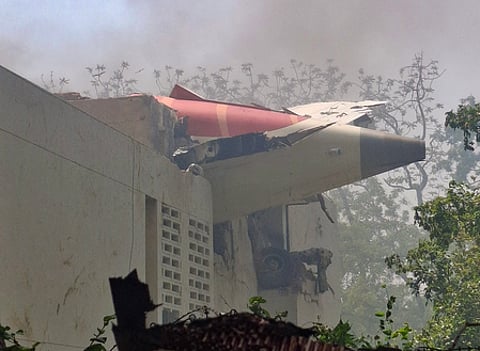Air India plane crash: What a ‘Mayday’ call really means
Unpacking the critical “Mayday” signal and its immediate impact during air emergencies

Dubai: In the wake of the recent Air India Flight AI171 incident near Ahmedabad, the term ‘Mayday’ has once again entered public discourse, highlighting its critical role in aviation emergencies. But what exactly is a “Mayday” call, and why is it so significant?
What happened onboard AI171?
The Air India B787 Aircraft, bound from Ahmedabad to London, gave a Mayday call to the Air Traffic Control (ATC) immediately after take-off but gave no response after that to calls made by the ATC to the aircraft, according to a statement from the Directorate General of Civil Aviation (DGCA).
This brief but crucial transmission alerted ground authorities to the severe emergency unfolding, allowing for immediate mobilization of rescue efforts to the crash site. The swift action initiated by this distress signal is paramount in attempting to save lives and mitigate the impact of such tragic events.
What is Mayday?
‘Mayday’ is an internationally recognized distress call used by pilots and maritime vessels over radio communications in cases of extreme emergency where life or the aircraft is in immediate danger. According to Globe Air, it is the most urgent distress signal in aviation and maritime operations.
When is it used?
A Mayday call is used in scenarios including engine failures, severe weather encounters, structural malfunctions or medical emergencies onboard the aircraft.
Why is it repeated thrice?
The call is typically repeated three times (“Mayday, Mayday, Mayday”) to avoid confusion with similar-sounding phrases and to ensure it is clearly understood.
Origin of Mayday
The term itself originates from the French phrase “m’aider,” meaning “help me,” which is pronounced similarly to “Mayday.” It was coined in 1923 by Frederick Stanley Mockford, a senior radio officer at London’s Croydon Airport, who was tasked with devising a word easily understood by all pilots and ground staff, regardless of their nationality.
Last resort
A Mayday call is a pilot’s last resort in aviation. It signifies a catastrophic event onboard, such as severe engine failure, uncontrolled fire, sudden depressurization, or a complete loss of control.
When a pilot issues a “Mayday,” it immediately triggers the highest level of emergency response from air traffic control (ATC) and associated rescue services. ATC clears all other air traffic, provides undivided attention to distressed aircraft, and alerts emergency ground crews, medical personnel, and accident investigation units.
Sign up for the Daily Briefing
Get the latest news and updates straight to your inbox



